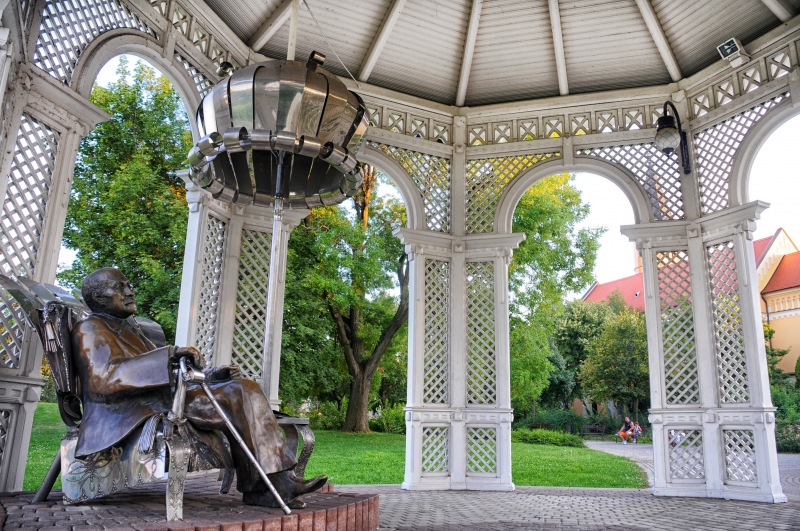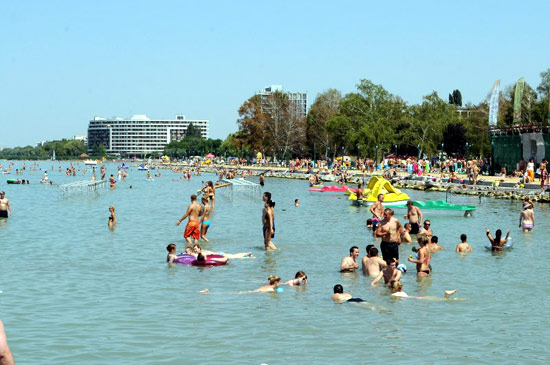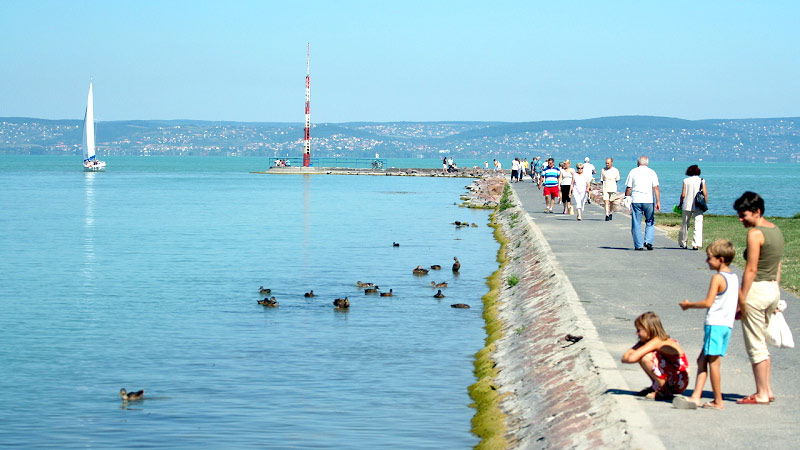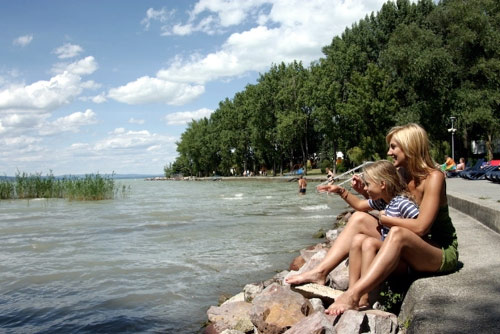|
Siofok
Siofok is a city in Hungary on the southern bank of Lake Balaton. Having the largest population among towns around the lake, Siofok is often referred to as the capital of the Lake Balaton. The city is one of Hungary’s most popular holiday destinations, famous for its beaches and nightlife.
Siofok is often called Hungary's summer capital as so many people flock there in the warm months. It is mostly famous for its huge nightlife and the never ending parties, especially during the weekends. The town is often called “the partying capital of Hungary”. But outside of the town center, there are many quiet and peaceful beaches and strands, making it a great destination for anyone. The party season usually begins around the end of June and the last party events are on the last weekend before the start of school in September.
From end of September to beginning of May, Siofok is a quiet little town, attracting conferences and wellness tourists. Siofok is a charming getaway with plenty to offer and these hostels provide an excellent base for exploring the town and surrounding areas.
History of Siofok
Popular places to visit in Siofok
Siofok Water Tower
The Water Tower is the well-known symbol of Siófok, which stands in the center of the town (Adresse: 11. Fő tér.) The tower was full renewed in 2012, to the centenary of its built. This monument has several specialties, such as two panorama elevators bring the guests to the belvedere floor and there you can see the breathtaking Balaton-panorama.
In the 45 m high building (was built1912 by the plans of Jenő Gergely and Árpád Gut) guests will experience 4 high quality amusement and relaxation space, the 360˚ open belvedere, Water Tower Café, Szentkirályi Oxygen Bar and Samsung Experience Center. The curiosity of the highest floor is that you can enjoy the beautiful round panorama sitting by a drink as the flour turns around with your table.
The Water Tower is OPEN to visit during the whole year!

Imre Kalman Museum
On the 105th birth anniversary of Imre Kalman, in 1987, a museum was opened in his birthplace in Siófok. The museum's permanent exhibition was held in the ground floor. In the internal corridor can be seen the contemporary Siofok, the mood of the last decades of the 19th century is affected the visitor, where in the summer writers, artists, musicians rest at this bathing place, turned their back on the big city life to get ready to their work

Roman catholic church
The Roman Catholic Church is one of the oldest buildings in town, which has been built in neo-roman style in 1903. Above its entrance door a work of the international-famed painter-artist Endre Muzsinszki Nagy (1886-1975) is visible. Neoclassic station paintings of the church were painted by Bela Buky (1928), while the triumphal arch, in the middle of which Patrona Hungariae is enthroned and receives homage of the Hungarian saints, is made fascinating by paintings of György Leszkovszky (1938). Stained glasses of the church have been made in the workshop of Miksa Roth. Based on dispositions of the 2nd Council of the Vatican sanctuary of the building has been rebuilt in 1980 according to scene designs of Gyorgy Osztie. The pastoforium is work of a Tyrolean master of the 17th century, the bearded, thorn crowned Christ inclining his head to the right. The largest organ of the whole-Balaton region is also to be found in the church. The instrument was constructed by Frigyes Paulus master organ-builder according to drawings of Sandor Fabian cantor. In the church there are organconcerts organized every summer with appearance of well-known domestic and foreign artists.

Evangelic church
This real, architectural evangelic church counting as a curiosity was being built based on Makovecz Imre, the famous Hungarian architect's plans. The architect melded the traditions of the folk architecture with the most modern devices. On this building, than on most of the artist's creations the tree - than natural building material - dominates. The church's building the considerable part of timber of which use was made from Siófok Finnish twin town, Oulu arrived as a gift. On top of the tower, from the life tree an outgrowing cross symbolize it, that the golgotai cross not that of the death, but the eternal one shows the way to a life. The four gate, angel wings guard the entrance above the main entrance of 120 room churches. It was ready church in 1990, the congregation house was ordained in 1992, in which the little community's congregation life very different the winter one and in the summer time

Jókai villa and Jokai park
The villa was build in 1897. Mór Jókai, the famous hungarian writer spent his last summer in this house. Nowadays a restaurant and a hotel operates in this bulding.


Thanhoffer villa
Not far from the port, the Thanhoffer-villa with its Baroque elements can be found, which is named after the famous medical professor who built it. In 1919, this building was the headquarters of Miklós Horthy, when he led his troops against the Soviet Republic.

Rose Garden

Millennium Park
The millennium park stands right in front of the beautiful building if the Siofok railway station. Spread over enormous area, the park also has a war monument dedicated to the 2nd world war. It also has the statue of Hungarian composer and Siofok’s pride: Imre Kalman. During summer, music events are organised by local artists.


Golden beach



|